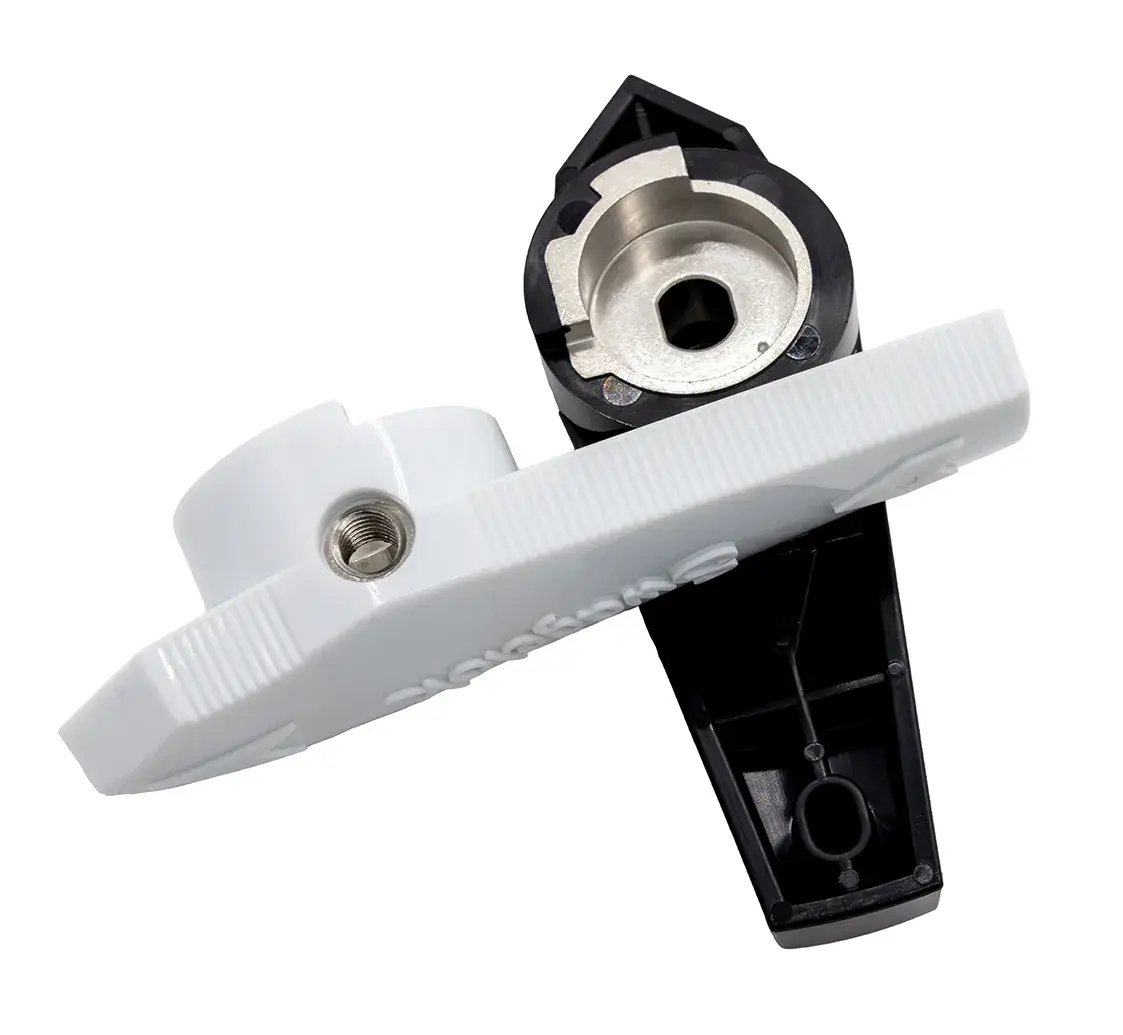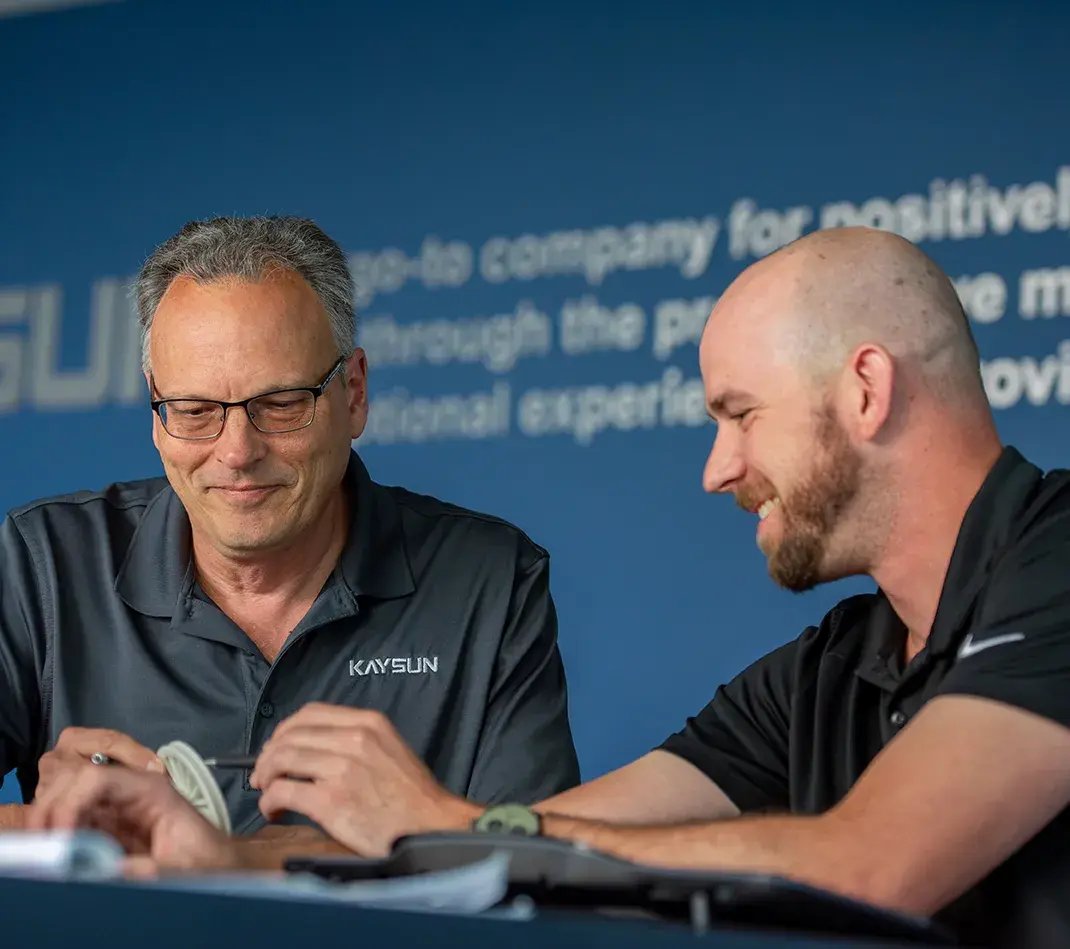
Insert Molding Services
What is Insert Molding?
Plastic insert molding is a specialized injection molding process used to encapsulate a pre-formed component made from metal or other solid material within thermoplastic. This integrated approach enhances part structural integrity, functionality, and flexibility.
The insert can be an individual item or an assembly of multiple components, precisely placed in a custom-built tool. As a result, secondary operations are eliminated, which shortens cycle times and often reduces costs.


Insert Molding vs. Overmolding
While both insert molding and overmolding involve combining materials during the molding process, there are key differences:
- Insert molding: A metal or other solid component is placed in a custom-built tool, then resin is injected into the tool cavity, coating the insert in a smooth layer of plastic
- Overmolding: A thin layer of plastic is applied over a compatible plastic or a metal base to create a durable, rubber-like exterior


Types of Insert Molding
The versatility of insert molding solutions make them ideal for meeting specific design, performance, and production needs:
SINGLE-PART INSERT MOLDING
The most common method of insert molding, a single solid component is placed into the tool cavity and encapsulated by molten thermoplastic injected into the tool cavity.
Single-part injection molding is ideal for applications that require enhanced structural support or wear resistance, such as threaded inserts or reinforcing pins.
MULTI-COMPONENT INSERT MOLDING
For more complex insert assemblies, multiple components are arranged within the tool prior to injection molding. The pre-configurations enable integrated part multi-functionality in single parts.
Multi-component insert molding is common in industrial, medical, or other applications where precision and durability are essential.
VERTICAL INSERT MOLDING
In this approach, the tool closes vertically to use gravity in accurately holding inserts in place during resin injection, ensuring precision alignment and placement within finished parts. Vertical presses often have rotary tables or shuttles to make production more efficient and compatible with line automation.
HORIZONTAL INSERT MOLDING
Horizontal molding machines optimize high-volume runs or larger part geometries. Due to multiple tool cavities and automated insert placement, horizontal insert molding is consistent and repeatable, cutting cycle times while increasing part production.
Benefits of Insert Molding
Insert molding brings measurable value throughout all phases of an injection molding program, including:
The ability to combine materials, features, and functionality into a single part gives engineers design options that may not otherwise be available through traditional injection molding methods. This is particularly beneficial for achieving tight tolerances and sophisticated geometries in complex applications.
Kaysun is known for our engineering team’s depth and expertise. Experience in Design for Manufacturability (DfM) and advanced analyses, material selection, tool design and build, and a collaborative approach provide innovative solutions and peace of mind.
Insert molding consolidates multiple secondary operations such as snap fits, welding, gluing, or mechanical fastening into a single operation. This reduces labor costs and production time while consistently maintaining part quality, performance, and aesthetics.
Automation ensures repeatability and accuracy in insert placement, greatly reducing the risk of human error, scrap, and rework.
Insert molding creates a molecular bond between the plastic and the insert during injection molding, resulting in a more durable finished product. Compared to adhesive bonding or mechanical fastening, this method improves structural integrity and reduces the risk of part failure over time.
While insert molding may require more complex engineering and tooling upfront, greater cost efficiency is gained over time. In addition to accelerated production timelines, fewer or no secondary operations, and reduced manual labor, inventory management is simplified through potential supplier consolidation.


Insert Molding Expertise
At Kaysun, we leverage advanced insert molding technology to deliver high-quality, precision-molded components tailored to your project's needs.
Our capabilities include:
- Automated Insert Placement: Using both horizontal and vertical molding machines maximizes automation and ensures consistent, accurate insert positioning
- In-House Engineering Support: Our team provides comprehensive services, including Design for Manufacturability (DfM) analysis, material selection, and tooling design, to optimize your program from concept to production
- Quality Assurance: As with all of our programs, rigorous quality control measures and scientific molding principles are in place during insert molding to ensure each part meets exact specifications

Does your company fit our ideal customer profile?
Complete the form to request a free consultation with our plastic engineering experts.

